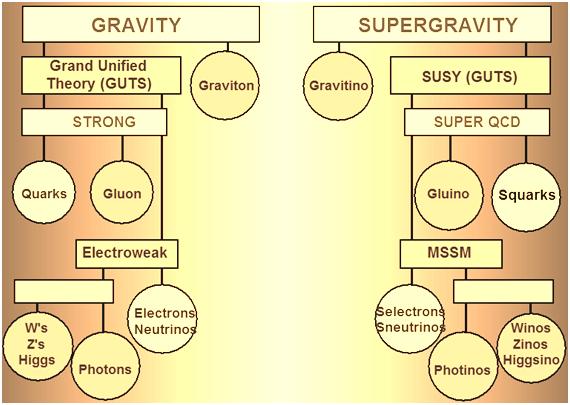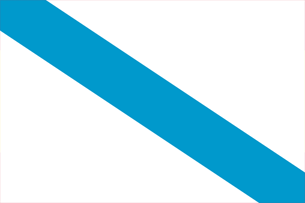Taking a closer look at LHC
Supersymmetry (SUSY) is a proposed property of the universe. It is been one of the best motivated extensions of the Standard Model, so the study of SUSY was a primary goal of the LHC.
After years of searching and loads of accumulated data from countless collisions, there is no sign of any supersymmetric particle. In fact, many supersymmetry models are now completely ruled out, and very few theoretical ideas remain valid.
Many physicists working on Supersymmetry Theories were shocked when no supersymmetric particles were discovered in the early days of the LHC, and even more so now that many years have passed since the start-up of this accelerator.
The lack of evidence for supersymmetry at the LHC does not signify a death knell for the idea. Nevertheless, now the community is going off in a large number of different directions.
In other section, we present one of the most fashionable ideas currently in vogue in the effort to go beyond the standard model.
Despite this situation, we believe it is interesting to comment briefly on the essential ideas underlying supersymmetry.
Supersymmetry requires every type of particle to have an associated supersymmetric particle, called its superpartner. The superpartner is a heavy replica of a particle, with one other significant difference. All particles are classed as either fermions or bosons. A particle belonging to one class has a superpartner in the other, thereby "balancing the books" and making nature more symmetric. For example, the superpartner of an electron (a fermion) is called a selectron (a boson).
|
These supersymmetric particles, or sparticles,have the same charge but opposite spin to the particles we’re familiar with, such as photons and electrons. We have already mentioned above that this did not happen after an intensive search. |
|

Grand Unification, grand unified theory, (GUT) predicts that at extremely high energies (above 1016 GeV), the electromagnetic, weak nuclear, and strong nuclear forces are fused into a single unified field.
Supersymmetry, specifically a version called the minimal supersymmetric model, achieves the grand unification more naturally, with far less fine-tuning. The theory predicts five Higgs bosons of different masses, which makes the process by which the universe gets its mass more complicated than that laid out by the standard model with its single Higgs.

But we remember again that after years of searching and loads of accumulated data from countless collisions, there is no sign of any supersymmetric particle.
|
AUTHORS Xabier Cid Vidal, PhD in experimental Particle Physics for Santiago University (USC). Research Fellow in experimental Particle Physics at CERN from January 2013 to Decembre 2015. He was until 2022 linked to the Department of Particle Physics of the USC as a "Juan de La Cierva", "Ramon y Cajal" fellow (Spanish Postdoctoral Senior Grants), and Associate Professor. Since 2023 is Senior Lecturer in that Department.(ORCID). Ramon Cid Manzano, until his retirement in 2020 was secondary school Physics Teacher at IES de SAR (Santiago - Spain), and part-time Lecturer (Profesor Asociado) in Faculty of Education at the University of Santiago (Spain). He has a Degree in Physics and a Degree in Chemistry, and he is PhD for Santiago University (USC) (ORCID). |
CERN CERN Experimental Physics Department CERN and the Environment |
LHC |
IMPORTANT NOTICE
For the bibliography used when writing this Section please go to the References Section
© Xabier Cid Vidal & Ramon Cid - rcid@lhc-closer.es | SANTIAGO (SPAIN) |



